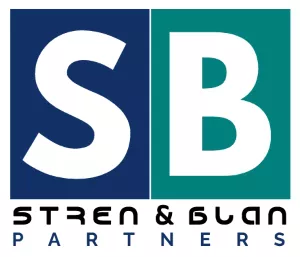INTRODUCTION
In February 2024, a significant development emerged in Nigeria's oil and gas sector. President Bola Ahmed Tinubu signed the Oil and Gas Companies (Tax Incentives, Exemption, Remission, etc.) Order, 2024 ("the Order"). This Order, empowered by the Companies Income Tax Act ("CITA"), aims to incentivize investment through tax breaks (Our review of the executive order can be found here). Pursuant to the power granted by the Order, the Minister of Finance ('MOF"), in collaboration with the Federal Inland Revenue Service ("FIRS"), Nigerian Upstream Petroleum Regulation Commission ("NUPRC") alongside other relevant stakeholders , subsequently issued implementation guidelines to clarify the application process and eligibility criteria.
APPLICATION OF THE IMPLEMENTATION GUIDELINES
This order and implementation guidelines apply to the following:
- Non-Associated Gas (NAG) greenfield developments in onshore and shallow water locations; and
- Midstream gas companies carrying out gas utilization projects.
The Implementation guidelines are addressed in three subdivisions:
- The Federal Inland Revenue Service Guideline on the applicability of Tax Credits and Allowances for Non-Associated Gas Greenfield Development.
- The Federal Inland Revenue Service Guideline on the applicability of the Midstream Capital and Gas Utilization Allowance.
- The Nigerian Upstream Petroleum Regulatory Commission Guideline on Hydrocarbon Liquid Content in a Non-Associated Gas Field.
GUIDELINE ON THE APPLICABILITY OF TAX CREDITS AND ALLOWANCE FOR NON-ASSOCIATED GAS GREENFIELD DEVELOPMENT
This guideline aims to provide clarity on the fiscal incentives available for Non-Associated Gas (NAG)2 greenfield developments in Nigeria. It outlines the conditions under which companies are eligible for Gas Tax Credits3 (GTC) or Gas Tax Allowances (GTA)4 based on the volume and composition of hydrocarbon liquids (HCL)5 produced alongside natural gas.
Eligibility Criteria for GTC:
NAG greenfield developments in onshore and shallow water locations with a first commercial production date of January 1, 2029, or earlier, are eligible for a GTC equal to US$1.00 per thousand cubic feet or 30% of the fiscal gas price, whichever is lower, provided:
- the HCL content does not exceed 30 barrels per million standard cubic feet6 ("MMSCF");
- the HCL is higher than 30 barrels per million standard cubic feet but less than 100 barrels per MMSCF, the tax credit is worth US$0.50 per thousand cubic feet, or 30% of the fiscal gas price, whichever is less.
Eligibility Criteria for GTA:
Companies commencing gas production after January 1, 2029, are eligible for GTA at a rate of US$0.50 per MCF or 30% of the fiscal gas price, whichever is lower, if the HCL content is not more than 100 barrels per MMSCF.
Nonetheless, if HCL exceeds 100 barrels per MMSCF, the company is required to revert to preexisting legislations. The measurement of the HCL in all circumstances is to be determined by the NUPRC.
Carry-Forward and Expiry of GTC Surplus:
Companies that accumulate more GTC than needed to offset their tax liabilities can carry forward these excess credits for up to three years. However, if these excess credits are not utilized within this timeframe, they expire and can no longer be used to reduce taxes. Additionally, companies eligible for GTC for their greenfield gas projects are ineligible to receive any other incentives or benefits under the Associated Gas Framework Agreement for the same project. This measure aims to ensure fairness and prevent companies from receiving double benefits for the same project, thereby promoting a balanced fiscal regime within the Nigerian oil and gas industry.
To view the full article click here
Footnotes
2. Non-associated gas, also known as "unassociated gas" or "free gas," refers to natural gas found without significant quantities of crude oil in the same reservoir. Unlike associated gas, which is found alongside oil deposits, non-associated gas exists independently in reservoirs. It is typically found in geological formations that lack significant oil content but contain natural gas in economic quantities.
3. Gas Tax Credit refers to the amount of tax credit granted to an eligible company.
4. Gas Tax Allowance refersto the amount of allowance granted to an eligible company.
5. Hydrocarbon Liquids Content refers to the hydrocarbon liquids from the split or drop-outs of raw wet non-associated natural gas.
6. MMSCF is equal to a million standard cubic feet; MSCF is equal to a thousand cubic feet.
The content of this article is intended to provide a general guide to the subject matter. Specialist advice should be sought about your specific circumstances.



